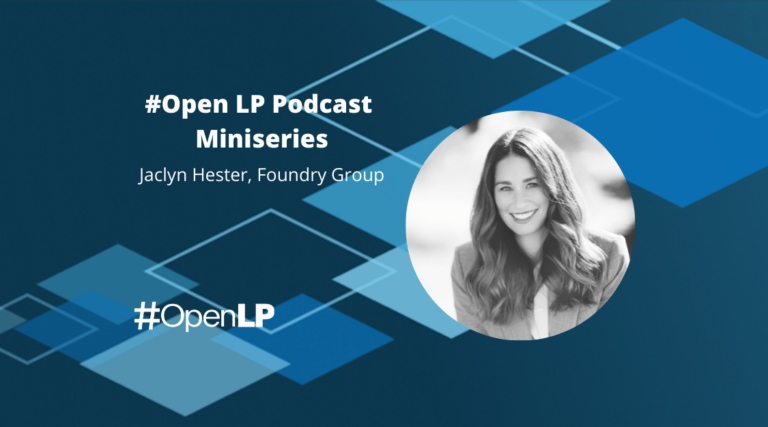This article originally appeared in PE Hub Network in January 2016.
Investing in the future is what limited partners (LPs) do for a living. It’s inexact, yet over the years Sapphire Ventures has developed a process to identify trends — in technology, and the venture ecosystem of course — that guide our investment decisions as an LP in early-stage venture funds. This means hours of conversations with venture funds (GPs) not only in the United States, but Europe and Israel too, as well as with our personal network of entrepreneurs, service providers and journalists to sift through the many signals and recognize patterns playing out in the venture ecosystem. Here are the trends we’ve been closely watching and what we think they imply for 2016:
Emerging managers matter. The last five years have seen an increasing number of new venture funds entering the market, most notably in the United States. In 2010, 52 of the 176 funds raised in the United States were first-time funds. By 2015, 79 first-time venture funds were raised out of 235, with the five-year high hitting in 2014 of 106 first-time funds out of a total of 271 funds.[1] Along with these new funds came new approaches to investing, and virtually overnight, a range of individuals — from entrepreneurs and journalists to athletes and celebrities — became venture capitalists for the first time or started trying new partnerships.
Venture is a dynamic industry and emerging funds, defined as the first four funds of a given GP, seem to have a high comfort level with change. Change can take multiple forms. For example, SoftTech VC evolved from an initial ‘super angel’ sub-$10 million Fund I, primarily focused on B2C, to an $85 million early-stage, institutional Fund IV with a broader investment focus that now includes B2B along with other areas. There’s also Formation 8, which recently reconfigured into multiple different funds. We believe more change is on the horizon. Venture capitalists will continue to shift in and out of funds, and venture funds themselves will reconfigure as they work through the specific type of firm and investment opportunities they wish to pursue.
However, limited partnerslike it when they find a strong venture firm into which they can put their money for many, many years over multiple funds. And venture firms like this too. Conventional investing wisdom also says that for LPs to achieve strong returns they should invest in a handful of established venture funds (translation: funds on their fifth fundraising cycle or higher) that run concentrated portfolios targeting the top-returning companies in any given year. Yet over the last 10 years, emerging venture funds have consistently accounted for 40–70 percent of total venture gains [2]. Think Union Square Ventures, First Round Capital, Spark Capital, LowerCase Capital, True Ventures and Emergence Capital to name only a few. The obvious conclusion: emerging funds matter. Yet…
LP’s will look for the signal in the noise. We’ve also seen the well-covered rise of the unicorns — startups achieving $1 billion+ valuations. This phenomenon has created impressive, albeit on the whole unrealized, returns for many venture funds. In turn, LPs have been experiencing a lot of noise, but not as clear signal. Add to that the volume of funds entering the market over the last few years and the wavering of unicorn valuations — both publicly and privately. How will LPs in 2016 assess the strength of a fund when the industry’s numbers have been up and to the right but there are fewer actual exits returning capital? LPs may very well pause to wait for (more) unicorn deflation to occur to highlight the unicorns from the ‘decacorpses’ and the corresponding impact on a venture fund’s portfolio. Even when taking seasonality into account, we could be seeing early signs of this when we look at both the absolute numbers of funds raised in the second half of 2015 as well as the year-over-year change when compared to 2014. In Q3 2015 there 53 funds raised in the United States, down from 71 funds raised in Q3 2014, and Q4 2015 came in even lower with 46 funds raised, down from 85 funds raised in Q4 2014.[1]
Funds will move towards the missing middle. In 2009 and 2010 the global markets contracted, and along with it venture fund sizes shrunk. Many larger funds ($300-$600 million+) reduced down to smaller sizes, and multi-strategy funds split into separate, more focused funds. An example of this is Morgenthaler, which transitioned from one $400 million fund that invested in both IT and life sciences to two separate funds: Canvas (IT) and Lightstone Ventures (LS). At the same time, many emerging managers raised sub-$100 million early-stage funds increasing the overall number of “smaller funds” or “micro funds” focused on seed and Series A deals. Lastly, another set of managers raised “giga funds” –$1 billion+ sized funds. These managers wrote larger checks into larger, later-stage deals. The overall dynamic created the “barbell effect” — very large funds on one side and on the other, much smaller funds with precious few in the middle.
Fast forward to today: no one is quite sure what to call any series, as what was once a seed round is now a ‘pre-seed’ round, seed rounds are being done at what were Series A sizes and valuations, and so on up the stack. To keep pace with the increasing round sizes and their pro-rata, GPs have responded. Fund sizes have been increasing, the time between fund raises has been shrinking and multiple venture firms have raised special opportunity, growth or pro rata funds. This trend of increasing fund sizes could very well continue for most A- (and early B-) round focused venture capitalists as they pursue meaningful ownership and healthy reserves. Already funds are pushing back into the previously missing middle of the barbell. We believe this process will accelerate if more funds follow August Capital’s Fund VII lead, which, rather than raising both an early-stage and a special opportunity fund, raised one fund instead.
Geography as destiny — or not. When does a VC need to be located down the street from the entrepreneur to win the deal and when can one invest successfully remotely? This can be as granular as San Francisco versus Palo Alto or as far-flung as Europe to New Zealand. The question of geography as destiny becomes even more meaningful given the rise of entrepreneurial tech hubs around the world.
Consider this: in 2011 venture-backed companies globally raised some $49 billion with North America representing 77 percent of the money raised. Up through Q3 2015, North America now represents some 61 percent. Europe has doubled the absolute amount of money venture-backed startups have raised on the continent going from $5.1 billion in 2011 to $10 billion through Q3 2015. Asia has seen large growth going from $6.3 billion in 2011 to $28.4 billion in Q3 2015.[3] Returns are also internationalizing. According to Cambridge Associates [2], of the top 100 value-creating deals in a given year, international investments have accounted for an increasing share, going from 5 percent from 1995 to 1999 to a recent high of 50 percent in 2010.
What does all this mean? Generally speaking, proximity matters at the earliest stages. Most venture capitalists won’t travel (far) to be the first money in, and the credibility bar for entrepreneurs seems to go up in direct proportion to the miles a VC has to travel.
One can break this rule. At the early stage, two great examples are Point Nine Capital and Union Square Ventures. Point Nine is a Berlin-based seed fund that invests in SaaS companies at very early stages around the world. Their system for doing so is beautifully explained in their #RemoteVC blog. Union Square is a leading New York City-based early-stage VC that has been investing in Europe since 2008 with 22 percent of its current portfolio in Europe.
Once a startup’s metrics are showing signs of achieving escape velocity, international relevancy with product/market fit locked in, all bets are off. At this stage of company growth, money has been coming in from venture funds located near and far.
Where the GPs go, LPs will follow. Back in 2004 there were a mere handful of venture capital bloggers; notable early bloggers include Brad Feld, David Hornik and Fred Wilson. Now there are hundreds. From there over the last decade plus venture firms have further evolved to be even more transparent, founder-friendly and focused on adding value beyond capital. We believe limited partners will follow suit.
Case in point: today, there are a handful of LPs blogging, tweeting and writing through vehicles such as OpenLP.com. Sapphire Ventures has been sharing our LP perspective since last May joining the company of LPs like Chris Douvos at VIA, Michael Kim at Cendana, Horsley Bridge, Top Tier Capital and Weathergage Capital. While newer to the institutional LP side of house, we expect to hear more from Foundry Group Next. And this is just the beginning. We believe LPs too will be well-served to be transparent, agile and able to deliver value in addition to capital just as the venture ecosystem and leading venture funds have evolved to do.



